 Movies and TV
Movies and TV  Movies and TV
Movies and TV  History
History 10 Things You Didn’t Know About the American National Anthem
 Technology
Technology Top 10 Everyday Tech Buzzwords That Hide a Darker Past
 Humans
Humans 10 Everyday Human Behaviors That Are Actually Survival Instincts
 Animals
Animals 10 Animals That Humiliated and Harmed Historical Leaders
 History
History 10 Most Influential Protests in Modern History
 Creepy
Creepy 10 More Representations of Death from Myth, Legend, and Folktale
 Technology
Technology 10 Scientific Breakthroughs of 2025 That’ll Change Everything
 Our World
Our World 10 Ways Icelandic Culture Makes Other Countries Look Boring
 Misconceptions
Misconceptions 10 Common Misconceptions About the Victorian Era
 Movies and TV
Movies and TV The 10 Coolest Stars to Set Sail on The Love Boat
 History
History 10 Things You Didn’t Know About the American National Anthem
 Technology
Technology Top 10 Everyday Tech Buzzwords That Hide a Darker Past
Who's Behind Listverse?

Jamie Frater
Head Editor
Jamie founded Listverse due to an insatiable desire to share fascinating, obscure, and bizarre facts. He has been a guest speaker on numerous national radio and television stations and is a five time published author.
More About Us Humans
Humans 10 Everyday Human Behaviors That Are Actually Survival Instincts
 Animals
Animals 10 Animals That Humiliated and Harmed Historical Leaders
 History
History 10 Most Influential Protests in Modern History
 Creepy
Creepy 10 More Representations of Death from Myth, Legend, and Folktale
 Technology
Technology 10 Scientific Breakthroughs of 2025 That’ll Change Everything
 Our World
Our World 10 Ways Icelandic Culture Makes Other Countries Look Boring
 Misconceptions
Misconceptions 10 Common Misconceptions About the Victorian Era
10 Intriguing Pieces Of Evidence For Bible Stories
Many people think the stories in the Bible couldn’t possibly be true. But whether from archaeological finds or physics students reconstructing Noah’s ark, we’re amassing more scientific evidence every year. Of course, it’s important to note that the Bible isn’t a history book, nor is it intended to be one. As a book of religious instruction, the Bible is filled with stories meant to teach. But, like many a good parable or legend, these stories appear to have some basis in fact.
10The Physics Of The Ark
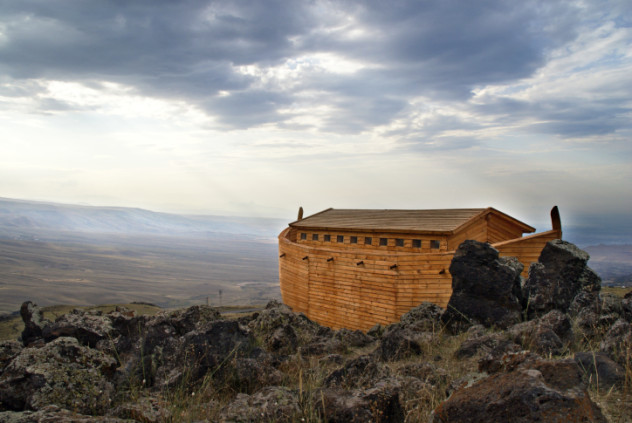
In 2014, four physics students from the University of Leicester tested the instructions given in the Book of Genesis for constructing Noah’s ark. They wanted to see if the 300-cubit-long, 50-cubit-wide, 30-cubit-high ark would actually float. A cubit is the length from the tip of a person’s middle finger to their elbow, which the students standardized at approximately 48 centimeters (19 in). That means the ark itself would have been around 145 meters (476 ft) long, 24 meters (79 ft) wide, and 14 meters (46 ft) high. The dimensions are like those of a small cargo ship.
The Bible says that the ark was made out of gopher wood, but nobody knows what that is anymore. A common guess is some type of cypress, so the students decided to use that for their calculations. When empty, a cypress ark would weigh approximately 1.2 million kilograms (2.6 million lb).
Next, the students had to determine how much weight the ark could carry without sinking. They knew that the density of the ark could not be greater than the water. Otherwise, the ship would sink. So assuming the vessel was shaped like a box, the maximum weight it could hold without sinking was almost 51 million kilograms (117 million lb). That’s the same weight as roughly 2.1 million sheep.
So could the ark have carried two of each animal? There are as many as eight million distinct species out there today, but the majority could survive a flood without being brought aboard the ark. Additionally, biblical scholars note that Genesis refers to two of every “created kind,” which probably refers to a smaller number of animals than two of every distinct species. Assuming all aquatic life stayed in the sea, then the students estimate that as few as 35,000 pairs of animals would need to be taken aboard, which the ark would have been easily capable of. (To reduce the space needed inside the ark, babies or young specimens of huge animals like elephants could have been used.) And how did Noah get all these animals in the first place? Some Christians hold that Noah built the ark on high ground and God simply had most of the animals migrate there for safety before the flood.
9The Power Of Jezebel

Jezebel, the most wicked woman in the Bible, is mentioned in various passages, most often in the Books of Kings. In the ninth century BC, she married King Ahab of Israel, even though she was a Phoenician who worshiped the deity Baal. According to the Bible, Queen Jezebel wanted to convert the Israelites to her religion, and she was willing to murder the Jewish prophets to do it.
In one passage, Jezebel forged Ahab’s seal on documents to persuade the Israelites to accept her religion and abandon their own. This didn’t go down well and she was ultimately thrown out of a window to be eaten by dogs. But historians have long wondered if Queen Jezebel had influence independent of Ahab’s authority. In other words, did she really have the power to be as bad as she’s presented in the Bible?
The answer might lie with a stone seal discovered in Israel in 1964. The seal’s iconography includes a double cobra, a Horus falcon, and a winged sun disk, which Old Testament scholar Marjo Korpel interprets to suggest a connection to royalty. In addition, a lotus and a sphinx with a female head and crown imply that the seal was used by a queen. If the seal belonged to Jezebel, it would imply she had considerable political power of her own.
But archaeologists initially had trouble connecting the seal specifically to Queen Jezebel. The engraved letters on the stone were confusing. Her name appeared to be misspelled. However, when Korpel compared the seal to others of that time, she realized that an upper edge was missing, which probably held the two missing letters that were needed to spell Jezebel’s name correctly in ancient Hebrew.
So case closed? Well, not quite. For starters, the seal wasn’t actually found by archaeologists, but simply turned up on the Israeli antiques market. This isn’t actually uncommon (just 10 percent of ancient Jewish seals were found in scientific excavations), but it does complicate identifying its origins. Korpel’s work has also been challenged by experts like Christopher Rollston, who notes that the missing portion is large enough to suggest at least five missing letters, rather than the two Korpel suggests could have spelled out “Jezebel.” Since the root “zbl” was quite common in ancient Semitic languages, the missing letters could make any number of different names or words. Rollston also argues that the seal contains no title or family name, which might be expected from a royal seal. Ultimately, we’ll probably never know the origin of the seal for sure, although we can at least say that it belonged to a very powerful lady.
8The Jewish High Priest Caiaphas
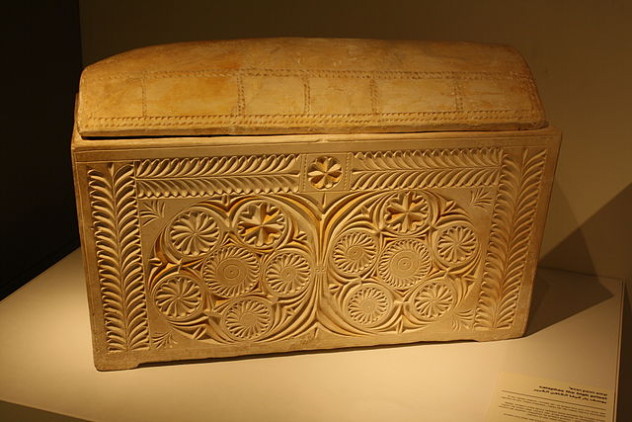
Appearing in the New Testament Books of John, Matthew, Luke, and Acts, Caiaphas was the high priest of Israel who presided over Jesus’s trial before delivering Him to Roman governor Pontius Pilate for crucifixion. (We’ve already covered the Pilate stone, physical evidence that Pontius Pilate actually existed.) In 1990, workers widening a road in Jerusalem stumbled across an ancient burial cave containing 12 ossuaries—limestone boxes containing the bones of the dead. One particularly ornate ossuary was inscribed “Joseph, son of Caiaphas.”
That name squares quite closely with the record of the first-century Jewish historian Flavius Josephus, who referred to Caiaphas as “Joseph who was called Caiaphas of the high priesthood.” The elaborately decorated ossuary contained the bones of a 60-year-old man, which was approximately Caiaphas’s age when he died. Archaeologists also observed that the writing on the ossuaries and the cave wall was the type of language used by cemetery workers in the first century. One of the ossuaries contained an AD 43 bronze coin, which is further evidence that the ossuaries were placed in the cave during the first century.
That said, the find isn’t without controversy. Skeptical archaeologists have noted that the tomb itself isn’t as fancy as you’d expect for the burial place of a high priest. And while other wealthy Jews of the time had their ossuaries delicately inscribed, the writing on the Caiaphas ossuary appears to have been crudely scratched with a nail. Additionally, some linguists have argued that the Hebrew name on the tomb doesn’t have enough syllables to be the origin of the Greek “Caiaphas,” and would actually have sounded more like “Qopha.” Others have dismissed this, noting that the Greeks had no problem adding extra syllables to confusing foreign names.
The ossuary is now in the Israel Museum in Jerusalem, although the bones were reburied on the Mount of Olives. In 2008, another ossuary was discovered in Israel and identified as belonging to Caiaphas’s daughter. The ossuary had been moved by thieves from its original location, but archaeologists currently believe it’s authentic. The ossuary is engraved with the words, “Miriam daughter of Yeshua son of Caiaphas. Priests (of) Ma’aziah from Beth Imri.”
7The Siloam Pool
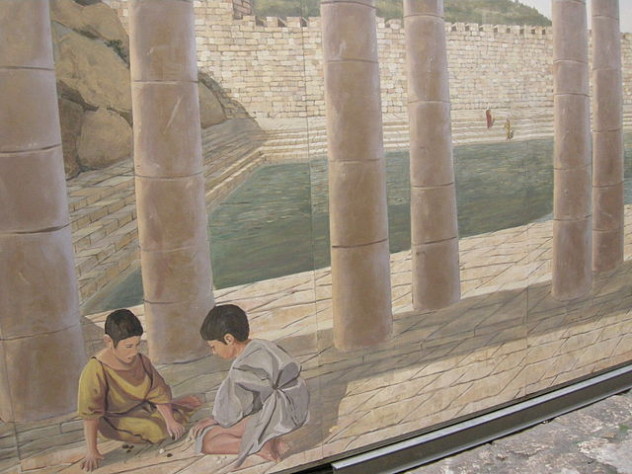
The Book of John tells the story of Jesus restoring sight to a blind man by putting clay on his eyes, then having him wash it off with water from the Siloam Pool. The pool was a major reservoir in Jerusalem during the Old Testament but was destroyed by invaders several centuries before Jesus was born. The pool was later rebuilt on several occasions, but there were no other mentions of a version of the pool in the first century. “Scholars have said that there wasn’t a Pool of Siloam and that John was using a religious conceit [to illustrate a point],” New Testament scholar James H. Charlesworth told the Los Angeles Times. “Now we have found the Pool of Siloam . . . exactly where John said it was . . . [John’s gospel] is now shown to be grounded in history.”
In 2004, workers attempting to repair a damaged sewer line discovered two steps leading to the pool. Archaeologists quickly took over and excavated the pool itself, which was a trapezoid about 69 meters (225 ft) long. They were also fortunate to find coins and pottery dating the pool to around the time of Jesus. In particular, four Alexander Jannaeus coins were buried in the plaster beneath the stone facade of the pool’s steps. Jannaeus ruled Jerusalem from 103 BC to 76 BC, meaning that the pool was built no earlier than that time.
In a corner of the pool, archaeologists discovered roughly 12 more coins buried in silt. These coins were dated from AD 66 to AD 70, indicating that the pool was at least partially filled in by then. Together, the two groups of coins give us an estimate of how long the pool was used. A stone bottle cork and pottery shards also help to confirm the date.
The pool may have been used for ritual bathing, swimming, or providing fresh water for city residents. Some people believe that Jews making their required pilgrimages to Jerusalem would ritually submerge themselves in the pool before going to the Jewish Temple. As Jesus would have made those pilgrimages, too, it makes sense that He may have been in the area at that time.
6The House Where Jesus Grew Up?
Although some people still argue that Jesus never existed, most serious scholars believe that the historical Jesus was born around 4 BC and was brought up in the Jewish faith in Nazareth. Archaeologist Ken Dark now believes he’s found a first-century Nazarene house where Jesus may have lived as a child.
In the 1880s, nuns first discovered this structure of mortar and stone built into a hillside. Artifacts found inside the home suggest to archaeologists that it was the residence of a Jewish family. For example, limestone pots would have been used by Jews because limestone was believed to be particularly pure. Dark also produced a sixth-century Scottish text describing a pilgrimage to the Holy Land, including a stop at a church in Nazareth “where once there was the house in which the Lord was nourished in his infancy.”
Although the house was abandoned during the first century AD, Dark claims it was identified as Jesus’s home during the Byzantine period, when it was decorated with mosaics. The Byzantines also built the “Church of the Nutrition” over the home to protect it. The Crusaders repaired the structure in the 1100s. This suggests to Dark that the Crusaders wanted to protect the house of Jesus, too. Even so, the home was burned down in the 13th century.
Dark is at pains to note that he doesn’t know whether the house actually belonged to Jesus, only that the Byzantines believed that it was. Nonetheless, he doesn’t rule it out, according to his article in the Biblical Archaeology Review: “Was this the house where Jesus grew up? It is impossible to say on archaeological grounds. On the other hand, there is no good archaeological reason why such an identification should be discounted.”
However, there are some questions still to be answered. For one thing, if the Byzantines and Crusaders knew of the house where Jesus was nursed, it must have been an important religious site to them. So why is the only mention of it an obscure Scottish letter? And Professor Dark does have a penchant for associating his finds with important Biblical sites. In 2013, he suggested an ancient fishing community he was excavating might have been the town where Jesus went after the miracle of the loaves and the fishes, with his best evidence being that the location hadn’t otherwise been identified yet. This led to accusations that he was driven by “the need to locate everything mentioned in Holy Writ.”
5King Solomon’s Wall

In the First Book of Kings, we’re told that King Solomon built a wall around Jerusalem. Around early 2010, the distinguished archaeologist Eilat Mazar announced the discovery of such a wall, along with other defensive structures, that seem to date to Solomon’s time in the 10th century BC. The wall is about 70 meters (230 ft) long and 6 meters (20 ft) high. It’s located where Jerusalem would have ended in that time period, straddling the City of David (now the Arab neighborhood Silwan) and the Temple Mount. Mazar’s team excavated parts of other defensive structures in that area, including a guard tower, a gatehouse that accessed the royal part of the city, and a nearby royal building.
Mazar believes that only King David or his son King Solomon could have built such a structure at that time. Figurines and shards of large pottery jars discovered around the gatehouse date to the late 10th century BC, which would place them in Solomon’s era. One of the storage jars had an inscription that pointed to ownership by a high-ranking Hebrew official. There were also impressions on jar handles that read “to the king.”
“This is the first time that a structure from that time has been found that may correlate with written descriptions of Solomon’s building in Jerusalem,” said Mazar in a press release. “The Bible tells us that Solomon built, with the assistance of the Phoenicians, who were outstanding builders, the [First] Temple and his new palace and surrounded them with a city, most probably connected to the more ancient wall of the City of David.”
Fellow archaeologist Israel Finkelstein acknowledged it was possible that Solomon built the wall, but told National Geographic that there were risks in using religious texts to definitively identify historic sites. “There is the question as to when it was written—300 years after, or at the time of the events? What are its goals and its ideology? Why was it written?” For her part, Mazar dismissed these concerns, arguing that “I don’t believe there is an archaeologist who would excavate a site upon which texts have been written without being familiar with those texts.”
4The Power Of The Copper Mines
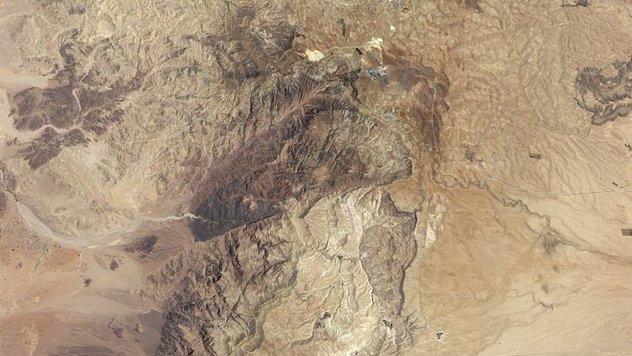
In the Bible, King David battled the Edomites. Many scholars believe the biblical conflict was exaggerated because, they argue, Edom and ancient Israel (or Judah) weren’t developed enough to assemble large armies to fight. They see David as tribal chief, rather than a king.
However, in 1997, archaeologists exploring the lowlands of Edom, in what is now southern Jordan, found evidence of a more complex society that focused on copper mining and military might. By concentrating their efforts on Khirbat en-Nahas (which means “ruins of copper” in Arabic), these archaeologists soon found that Bible scholars had been focusing on the wrong part of Edom, leading them to conclude that the ancient society there was a pastoral one. If the scholars had looked at the lowlands, they would have found dozens of copper mining sites, including slag heaps like the one pictured above.
Based on the age of the pottery at these sites, they were operating most heavily around the time of King Solomon. Archaeologists also found a large Iron Age fortress there. Radiocarbon dating places the sites in the 10th century BC, roughly contemporary with the reigns of David and Solomon in the Bible. Although more work has to be done, it’s possible that significant copper production (without a military purpose but with a complex society) occurred as far back as the 12th century BC or even earlier.
This lends credence to Genesis 36:31, which refers to kings in Edom before kings ruled over Israel. The Bible also says that King Solomon was chosen by God to build the first temple in Jerusalem using hundreds of tons of copper. Between the Edom mines and the copper sites at Slaves’ Hill and the Timna Valley, all of which date to the 10th century BC, it’s possible that Solomon may have controlled or had access to enough copper production to build a temple.
The Bible also talks about an Egyptian King Shishak, who invaded the area five years after Solomon died. In recent years, an Egyptian amulet inscribed with the name of Pharaoh Shesonq I (aka “Shishak”) was found at a local copper site named Khirbat Hamra Ifdan. Similar amulets without inscriptions were found at Khirbat en-Nahas. Archaeologists believe this may be evidence of Sheshonq I’s military exploits disrupting the Edomite copper production in the 10th century BC.
3Nehemiah’s Wall
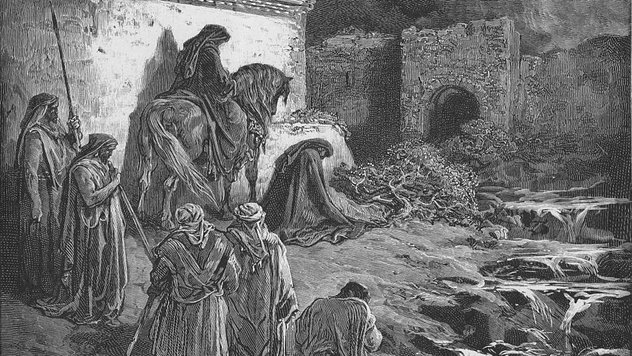
We’ve already talked about Solomon’s wall around Jerusalem. But the city and its people have had such a tumultuous history that its changing walls often mirror their story, some of which is recounted in the Bible.
In the sixth century BC, Babylon conquered the Kingdom of Judah and sent the Jews into exile, which continued until Persia defeated Babylon and allowed the Jews to return to Jerusalem. Written in the first person, the Book of Nehemiah tells the story of how Nehemiah mobilized the Jews to rebuild the walls and the gates of Jerusalem in just 52 days.
In 2007, Eilat Mazar revealed that her team had discovered Nehemiah’s 5-meter-wide (16 ft) wall while excavating what they believed to be King David’s palace in the ancient City of David. When a nearby stone tower began to collapse, the archaeologists tried to repair it, but ended up on a six-week dig under the tower instead. The dig yielded pottery, seals, and other artifacts dating to the sixth and fifth centuries BC. When they didn’t find pottery from an earlier period, they concluded that the tower was built around the same time as Nehemiah rebuilt Jerusalem’s wall. Some of the names on the artifacts are also found in the Bible.
2The Spring Citadel
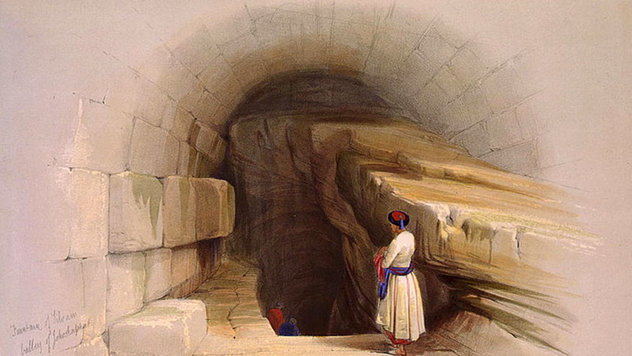
As part of an almost 20-year dig in the City of David, archaeologists announced in 2014 the discovery of the “Spring Citadel,” a massive 18th-century BC fortress that secured the Gihon Spring from invaders in ancient times. Its walls were 7 meters (23 ft) thick, only allowing access to the spring from within the city.
“In order to protect the water source, they built not only the tower—but also a fortified passageway that allowed the city residents a safe access to the water source,” archaeologist G. Uziel told Ynetnews. “This very impressive structure was operating until the end of the Iron Age, and it was only when the First Temple was destroyed that the fortress fell into ruin and stopped being used.”
Archaeologists believe the Spring Citadel is the fortress that was conquered by King David in 2 Samuel 5:6–7 and that protected the Gihon Spring where Solomon was anointed king of Israel in 1 Kings 1:32–34.
1Goliath’s Hometown
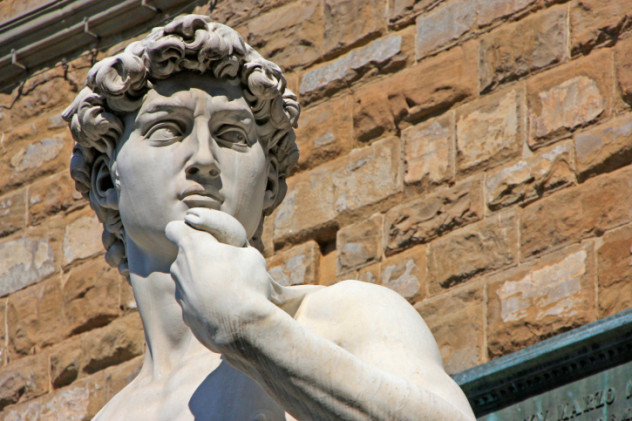
Although nobody has discovered a huge skull with a slingshot wound in it, archaeologists think they may have found Goliath’s hometown of Gath, a Philistine town between Ashkelon and Jerusalem which is mentioned in 1 Samuel 6:17. During the excavation of Gath, archaeologists uncovered a 3,000-year-old horned stone altar in excellent condition, similar to those described in the Books of Kings and Exodus. However, the Philistines’ altar has two horns while the biblical altars have four.
The Philistines are biblical villains who lived around Gath during the 10th and 9th centuries BC, the era of David and Solomon in the Bible. Aspects of Philistine culture appear to have been described accurately in the Bible. For example, archaeologists have found a massive structure with two pillars, similar to the Philistine temple of the Samson story. They’ve also discovered pottery shards with inscribed names that are similar to the Indo-European name Goliath. The local Israelites and Canaanites wouldn’t have used such a name, but obviously the Philistines did.
That’s consistent with other findings, which revealed that the Philistines kept parts of their historic culture while embracing some of the local culture. For example, the Philistines ate dogs and pigs, animals considered to be unclean in Jewish culture. The Philistines also continued to worship their own gods. Although the excavation has provided evidence of the violent battles between the kings of Jerusalem and the Philistines, archaeologists have also found indications of Gath’s destruction by an invading army in the ninth century BC, similar to the story of the Aramean King Hazael’s conquest of Gath in the Book of Kings.








